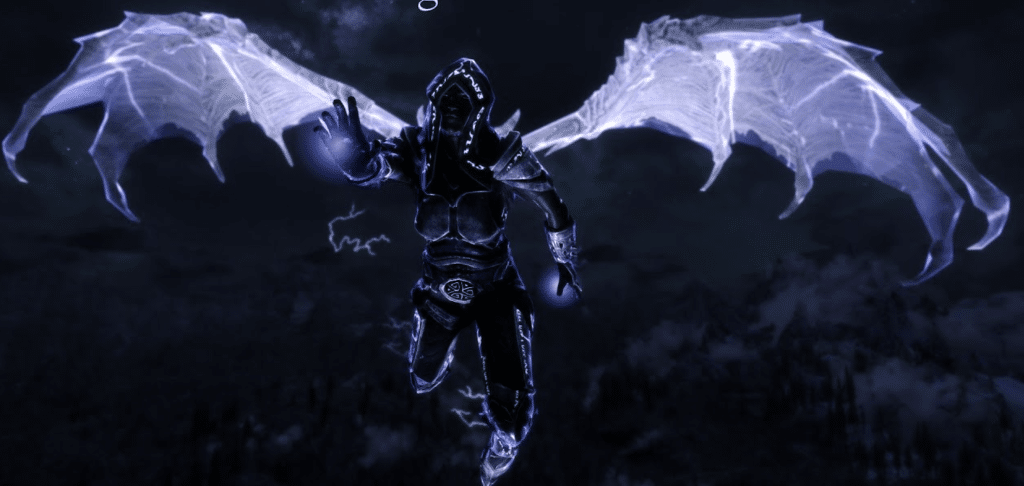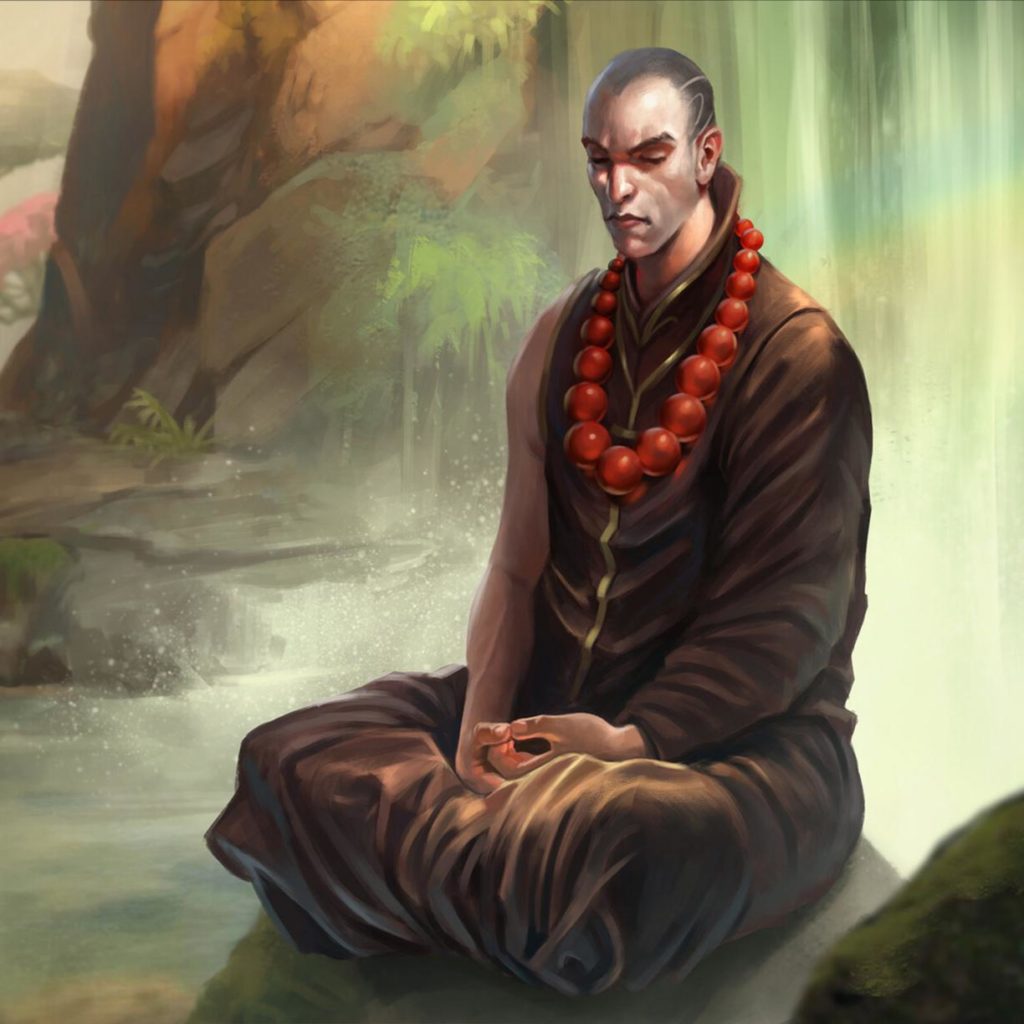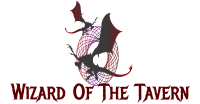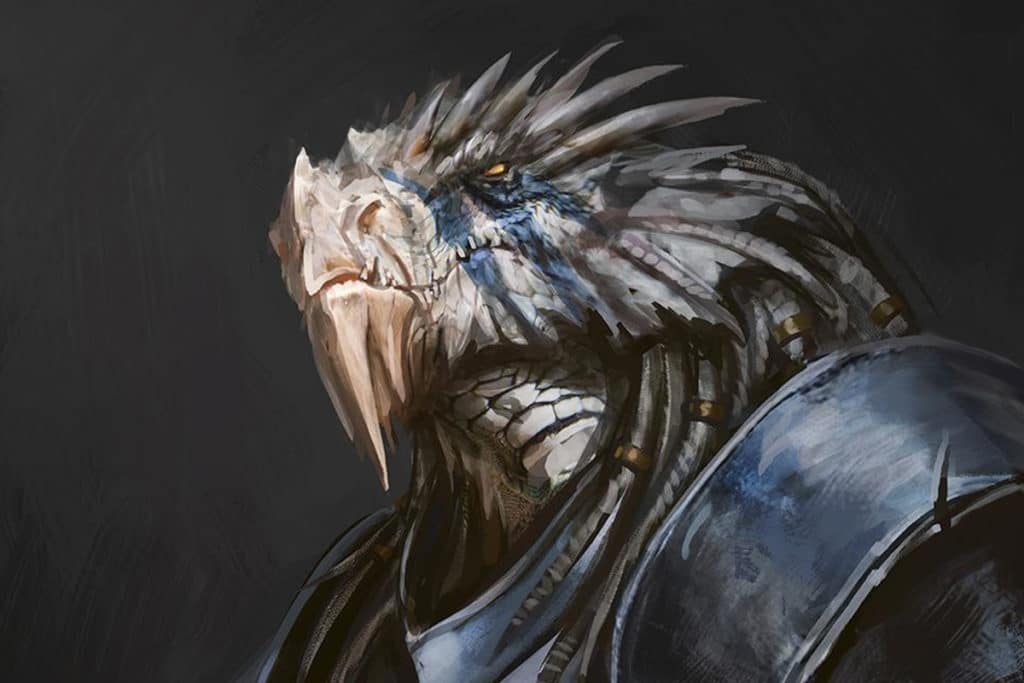Way of the Ascendant Dragon is a class first seen in unearthed arcana and was there for quite some time.
However, the way of the ascendant dragon will make its final debut as the new monk subclass released in Fizbans Treasury of Dragons and is designed to strike fear into your enemies and protect your allies.
Its abilities, while a little bit scattered, make an excellent subclass for players who like a roleplay playstyle.
So let’s get right into their abilities.
Draconic Disciple
At 3rd level get draconic disciple this lets you have:
- Draconic strike– When you deal damage with unarmed strike you can change the damage to acid, cold,fire, lightning, or poison
- Tongue of dragons– You speak, read, and write draconic or one other language of your choice. And, if you fail a (charisma) intimidation or (charisma) persuasion check you can use your reaction to reroll the check. You can do this until you successfully pass a check using this skill. The ability resets when you take a long rest.
Draconic Strike seems great. Having versatility in damage type can go a long way in making you effective in fights.
That said, out of 445 monsters, only 10 monsters are resistant to magical bludgeoning damage,
With 5 more monsters being vulnerable to bludgeoning damage.
That means this ability only applies to 2% of enemies you might run into.
But still a useful ability for overcoming resistances or exploiting vulnerabilities.
As for the tongue of dragons, the ability itself is not bad at all.
Getting draconic is nice but not usually relevant in a lot of campaigns but great for flavor.
But, what makes this good is the fact that you can reroll a check if you fail.
To put this in numbers, you will pass the average charisma check 22% more of the time.
Which is great from a roleplay perspective.
But that is not all the way the ascendant dragon gets at level 3. They also get Breath of the dragon which states:
Breath of the dragon
The next ability way of the ascendant dragon gets at level 3, is breath of dragon.
Which states that:
At 3rd level, When you take the Attack action on your turn, you can replace one of the attacks with an exhalation of draconic energy in either a 20-foot cone or a 30-foot line that is 5 feet wide (your choice). Choose a damage type: acid, cold, fire, lightning, or poison. Each creature in the area must make a Dexterity saving throw against your ki save DC, taking damage of the chosen type equal to two rolls of your Martial Arts die on a failure, or half as much damage on a success.
At 11th level, the damage of your breath increases to three rolls of your Martial Arts die.
You can use this feature a number of times equal to your proficiency bonus, and you regain all expended uses when you finish a long rest.
While you have no uses available, you can spend 2 ki points to use this feature again.
Early game, Breath of the Dragon is great.
Not only do you get a flexible AOE when classes like wizards only get ice knife, but this also gets more powerful as you level up.
This is solid damage that on average will deal anywhere from 4-13 damage to each enemy.
Combine that with the ability to do this twice a turn at level 5 and still flurry of blows, and you can now fight a large swarm of enemies easily.
Making this actually one of the highest AOE damage subclasses at level 5.
To put that another way, a fireball hitting three enemies will deal 48 damage at level 5.
You, however, can deal on average 45 damage to those three enemies as well at this level.
That is insane.
All in all, though this makes the way of the ascendant dragon one the best class in early game for hitting large amounts of enemies, but begins to weaken as levels and hitpoints get higher.
Considering the average campaign ends at level 8 though, this will always be relevant for most players.

Wings Unfurled
Once you graduate from your level 3 abilities, you get wings unfurled which allows you to:
At 6th-level when you use your Step of the Wind, you can unfurl spectral draconic wings from your back that vanish at the end of your turn. While the wings exist, you have a flying speed equal to your walking speed.
You can use this feature a number of times equal to your proficiency bonus, and you regain all expended uses when you finish a long rest.
Flying is never bad.
And this is no different.
While expensive at a cost of 1 ki point for 6 seconds of flying, the monk at level 6 can move 45 ft.
Meaning that if you want you can pay 1 ki point to fly 135 ft for your turn.
This gets you up to 13 story buildings, safely get to another side of cliffs, and even get back into combat when enemies are flying.
A nice boon for a melee class that likes staying in melee.
Combine this with stunning strikes on flying enemies and your DM is going to hate your monk more than they already might.
Aspect of the Wyrm
After that, however, the class gets a little weaker with Aspect of the Wyrm which allows you.
When you reach 11th-level the power of your draconic ki now radiates from you, protecting your allies from harm and punishing any who raise arms against them. As a bonus action, you can create an aura of draconic power that radiates 10 feet from you for 1 minute. Choose acid, cold, fire, lightning, or poison damage, and for the duration, you gain one of the following effects:
- Frightful Presence– when you create this aura and as a bonus action on your other turns, you choose a creature within the 10 ft radius aura to make a wisdom saving throw against your ki save or become frightened of you for a minute. They can repeat the save at the end of their turn.
- Resistance-You and your allies within your aura gain resistance to the chosen damage type (Acid, Cold, Fire, Lightning, or Poison).
Once you use this bonus action, you can’t use it again until you finish a long rest, unless you expend 3 ki points to use it again.
Resistances are great.
But what this basically reads as is “give yourself resistance to an element for one minute.”
That is not good, at this level you should be getting a permanent resistance or some better ability.
While a 10 feet radius protecting your allies might come in handy, a monk is designed for 1v1 fights so they are usually away from where the other melee fighter is.
Making this irrelevant most of the time.
As for frightening presence, 112 of 445 monsters are immune to frightened meaning 25% of enemies won’t be affected.
Furthermore, when you calculate that a monster has about a 51% chance to beat the save at this level, you are most likely wasting a bonus action instead of hitting at this level.
So not great for the way of the ascendant dragon.
Ascendent Aspect
At 17th-level your draconic ki reaches its peak. You gain the following benefits:
- Augment breath- when you use breath of the dragon you can spend a ki point to altar its shape and power. It becomes either a 60ft cone or a 90ft line and takes damage equal to 4 rolls of your martial arts die on a failed save and half on a success.
- Blindsight- You gain blindsight out to 10 feet. Within that range, you can effectively see anything that isn’t behind total cover, even if you’re blinded or in darkness. Moreover, you can see an invisible creature within that range, unless the creature successfully hides from you.
- Explosive Fury– When you activate your Aspect of the Wyrm, draconic fury explodes from you. Choose any number of creatures you can see within your aura. Those creatures make a dexterity saving throw against your ki save or take 3d10 acid, cold, fire, lightning, or poison damage (your choice). If they pass the save, they take no damage.
Unfortunately, the hits just keep coming for the way of the ascendant dragon.
Ascendant aspect enhances every aspect of what the way of the ascendant dragon tries to do.
Its augmented breath lets you hit more enemies and deal more damage with your level 3 ability.
Blindsight allows you to see invisible creatures that don’t beat your passive perception.
And Explosive fury allows Aspect of the Wyrm to deal damage.
The problem is it does all of these poorly.
Ascendant aspect does its job best by dealing 5 extra damage to each enemy and possibly hitting more enemies as well.
Meanwhile, blindsight only reveals invisible creatures within 10 feet of you who fail their stealth check.
This means that, unlike original blindsight, this is a weaker version and only extends 10 feet.
Finally, we have Explosive fury which the average enemy will save from a dex save only 34% of the time.
This is good numbers but as a bonus action, you can consistently deal 21 points of damage to an enemy.
Which is better than the 17 damage Explosive Fury can do.
Which also has a 34% chance to deal no damage making its true damage 11 points instead of 21.
Everything considered,l not great, especially at level 17.

Way of the Ascendant Dragon Thoughts
Once looking at the abilities, way of the ascendant dragon is okay at best for most players.
Its abilities are all over the place.
Giving a utility boost with flying, a roleplay boost with persuasion, and combat with the rest.
Combine this with incredibly weak late levels abilities, and way of the ascendant dragon does not look great.
That said, thematically, this is perfect for people who have a roleplay playstyle when it comes to D&D.
Not only that, when you consider most games end by level 8, the way of the ascendant dragon gets most of their power in the first 6 levels meaning most players will not be put off by their later game abilities.
Making this subclass a good choice for those looking to build a monk able to fight multiple enemies.
But, once you get past level 8 you should look into multiclass options.
All in all, a good choice for campaigns ending before level 8 but terrible for campaigns that go beyond.
Way of the Ascendant Dragon Suggestions
As for suggestions I recommend looking at Race, Multiclass, and feat options depending on your playstyle.
RACE
For race, I recommend a kobold from a roleplay perspective.
As a kobolds’ “draconic fury” on enemies is both flavorful and funny to imagine.
For utilizing the AOE combat synergies of the class, a goblin is great for disengaging as a bonus action.
While for a utility aspect a dragonmark of healing halfling is great for healing the party, rerolling 1, and still on flavor point.
Ironically, the 3 recommended races are all tiny for a subclass around dragons.
MULTI-CLASS
For multiclassing, both utility and roleplay playstyles will love being a tempest cleric to bahumat, not only does the roleplay synergies work together, but the class also allows you to do max damage with your breath of the dragon.
As for a combat playstyle, a hunter ranger subclass is a great choice as horde breaker allows you to make more attacks against a large swath of enemies, which is what your class tries to do.
FEATS
For feats, however, a draconic mark is incredibly on flavor for this subclass.
While, Mobile is a great one both for combat and utility as it allows you to maximize breath of the dragon, and wings unfurled.
But the best utility feat for a monk is going to be crusher. Not only does it allow you to manipulate enemy positioning it also can give your entire party advantage on attacks against them. Making this great for supporting the party.
Way of the Ascendant Dragon Conclusion
In conclusion, the way of the ascendant dragon is a good subclass for those liking the roleplay or AOE aspect of the class.
Due to its abilities I would recommend this more for people who make characters off-flavor and lore over anything else as after level 6 the way of the ascendant dragon really begins to go downhill.
If you enjoyed this content, then I highly recommend checking it out the new book Fizban’s Treasury of Dragons or reading one of the other subclasses the book offers, such as the Drakewarden Ranger.

